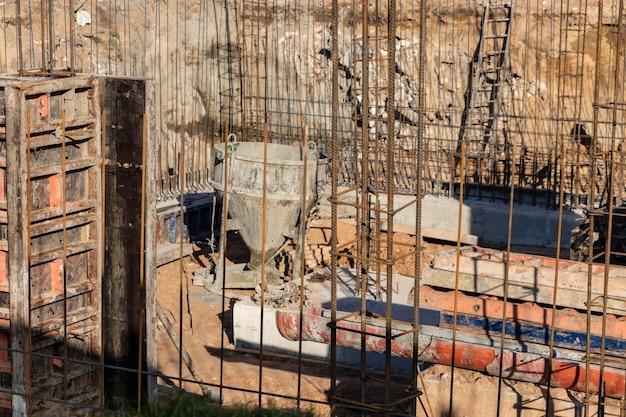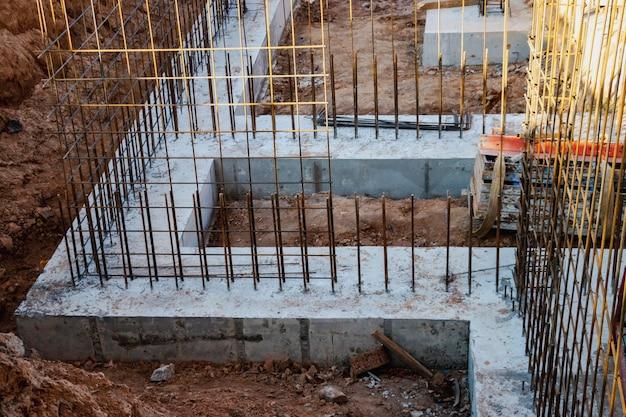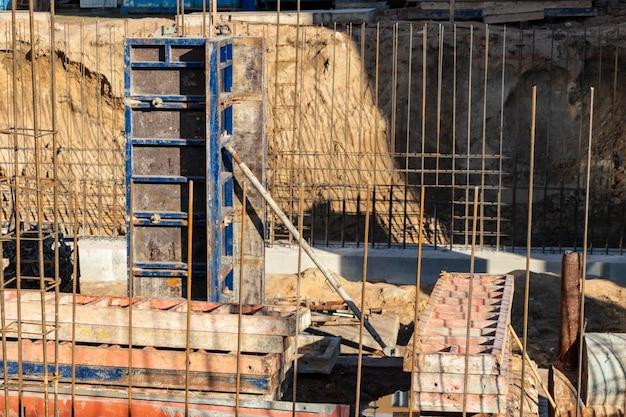Are you experiencing cracks in your basement walls or floors? Do you feel like your foundation is sinking? Underpinning basement foundation is a process that can help stabilize and strengthen your foundation. But, is it worth the cost? What are the alternatives? In this comprehensive guide, we’ll answer all of your questions about underpinning basement foundation, from the process and cost to whether it’s worth it. So, let’s dive in and learn more about underpinning basement foundation.
Digging Deeper into Underpinning Basement Foundation
If you own a house that has a basement, then you already know how important it is to have a strong foundation. Basement foundations are vital because, without them, your house could suffer significant damage from soil movements or shifting. One way to ensure your basement foundation is sturdy is by underpinning it, a process that involves extending the foundation’s depth or width.
What is Underpinning
Underpinning is a reliable foundation repair method for houses that have damaged foundations or need an upgrade. The underpinning process involves the removal of soil underneath the existing foundation and replacing it with a stable material like concrete. By adding more weight below the foundation, you reduce the chances of future ground movements affecting the structure’s stability.
When to Consider Underpinning Your Basement Foundation
If you have noticed any of the following signs of foundation problems, your home may need underpinning soon:
- Cracks in the foundation walls or floors
- Uneven floors
- Doors and windows that stick or don’t open/close correctly
- Gaps between the walls and the ceiling
If left unchecked, these problems can worsen, leading to costly repairs. Therefore, it’s best to contact a foundation repair expert as soon as you notice any damage signs.
Benefits of Underpinning
Underpinning has several benefits for your house, including:
- Increasing the strength of the foundation and preventing further damage
- Restoring the foundation’s original height and levelness
- Prolonging the life of your structure and protecting your investment
By investing in underpinning, you save yourself a lot of money in the long run.
Cost of Underpinning
The cost of underpinning varies depending on the extent of the damage, the accessibility of the site, and the type of underpinning used. However, underpinning is generally an expensive process, with some homeowners spending thousands of dollars. But the benefits of underpinning far outweigh the costs, especially considering the significant damage that a weak foundation can cause.
Underpinning is an effective method to ensure your basement foundation stays strong and stable. With the right experts, you can avoid costly repairs and protect your home from further damage. So, if you notice any signs of foundation damage, don’t hesitate to contact a foundation repair expert and schedule an inspection.
What is Underpinning Basement Foundation
Have you ever heard of the phrase “underpinning basement foundation”? Even if you haven’t, fear not, because we’ve got you covered. Underpinning is a method used to strengthen the foundation of an existing building, often used when the original foundation is deemed insufficient or unstable. This method involves extending the basement foundation downwards to reach more stable soil layers. It’s like giving your house a giant hug from underneath to keep it sturdy and safe!
Why Underpinning is Necessary
If you’re experiencing cracks in your walls or floors or uneven surfaces, your home’s foundation may be in trouble. It’s essential to address these issues early on before they cause more significant damage. By underpinning your foundation, you can stabilize your home’s structure and prevent further foundation problems. Think of it as giving your home an extra layer of armor to protect it from the uncertainties of the ground it’s built on.
How Underpinning Works
Underpinning your basement foundation may seem like a daunting feat, but it’s accomplished through a simple process. First, your contractor will need to excavate and remove the soil surrounding the foundation to create a workspace. A skilled team will then dig down to your home’s existing foundation and install temporary supports before lowering the foundation down further.
Once the new foundation depth is attained, steel reinforcement is installed to maintain stability. The final step includes filling the new space with concrete, which then cures over time to a final solid form.
Benefits of Underpinning
Underpinning your basement foundation provides numerous benefits other than strengthening your home’s foundation. It can add additional height to your ceiling, creating more usable space. It can also create a safer foundation for your home’s structural integrity. This process can help you save money on costly repairs by addressing foundation issues early on. Additionally, underpinning can improve your home’s resale value and increase the structural longevity of your home, giving you peace of mind that your home is safe and secure for generations to come.
Underpinning is not a process that should be taken lightly, but it’s an essential method for homeowners to ensure their home’s foundation is secure and stable. If you notice signs of foundation problems, such as cracks in your walls and floors, or uneven surfaces, it’s best to consult a professional to address the issue. By underpinning your basement foundation, you can strengthen your home’s structure and protect it from future problems, giving you peace of mind and a sound investment in your home.
Underpinning Basement Cost: How Much Will It Set You Back
Are you considering underpinning your basement? If yes, then one of the factors that you might be worried about is the cost. The truth is, underpinning basement cost can vary a lot depending on different factors such as the size of your basement, the materials used, and the labor costs in your area. But don’t worry, we’re here to give you a rough estimate of how much it will set you back.
Factors Affecting Underpinning Basement Cost
Before we delve into the numbers, it’s essential to understand the factors that affect underpinning basement cost. These include:
-
Size of the Basement: The larger your basement is, the more expensive it will be to underpin it.
-
Materials Used: Underpinning basement requires specific materials like concrete, steel, and sometimes, timber. The quality of materials used affects the overall cost.
-
Labor Costs: The cost of labor varies depending on the qualifications, experience, and location of the workers entailing more rates.

Cost Estimate
Now that we have a general understanding of the factors that affect underpinning basement cost, let’s dive into the numbers.
On average, underpinning basement can range from $100 to $250 per square foot. If you have an average-sized basement, say 1,000 square feet, then you can expect to pay between $100,000 and $250,000. This estimate includes all the costs involved, such as the materials and labor costs.
However, it’s essential to note that this is just a rough estimation and that the cost can go higher or lower than this, depending on your specific circumstances.
DIY or Hire a Professional
Underpinning your basement is not a DIY project. It requires specialized skills and experience that only a professional can provide. Not to mention that the cost of fixing a botched DIY job can be much higher than the cost of hiring a professional in the first place.
In summary, underpinning basement cost is an essential factor to consider when you’re planning to do it. Understanding the factors that affect the cost and getting a rough estimate can help you make an informed decision. Remember, though, that underpinning your basement is not a DIY project, so always hire a professional.
Is It Worth Underpinning a Basement
You’ve probably heard about underpinning basement foundations, and you’re wondering if it’s worth it. The short answer is yes, it’s worth it. But, why?
A Stronger Foundation Means a Stronger House
Underpinning your basement foundation will give you a stronger foundation. It will help your house withstand natural calamities like earthquakes, floods, and hurricanes. You’ll have fewer foundation problems and therefore fewer repair costs.
Increase the Value of Your Property
Underpinning your basement foundation is an investment that can pay off big time. If you’re planning to sell your house, a strong foundation is a great selling point. The unique selling point of your property will set it apart from neighbors in your area, increasing the market value.
Turn Your Basement into a Living Space
If you’re running out of space in your home, underpinning your basement foundation can be the solution. You can turn your basement into a living space with more headroom. You can add bedrooms, a home office, or a gym. You’ll have more space and more equity in your property.
Say Goodbye to Cracks and Leaks
Underpinning your basement foundation minimizes the risk of cracks or leaks. If you live in an older house, the foundation may become weakened over time. Underpinning provides additional support for an older foundation and eliminates any cracks or leaks.
The Investment is worth it
Underpinning your basement foundation is an investment, but it’s a worthwhile one. The amount you’ll spend underpinning your basement foundation is much less than the amount you’ll spend on repairing a damaged foundation. Plus, the long-term benefits are priceless.
Bottom Line
Underpinning your basement foundation is necessary if you’re experiencing foundation problems. It’s also a worthwhile investment if you’re planning to sell your property soon or need more living space. So, is it worth underpinning basement foundation? The answer is definitely YES.
Basement Floor: Is it Part of the Foundation
When it comes to a house’s foundation, many people wonder if the basement floor is part of it. Well, the quick answer is “yes” because the basement floor sits directly on the foundation walls. But, hold on, my dear reader, let me take you on a journey to understand this better.
The Role of a Foundation
A house’s foundation is its anchor, the base that supports the entire structure. The foundation’s primary purpose is to transfer the weight of the house’s load (walls, roof, and floor) to the ground safely. Without the foundation, a building would crumble to the ground, leaving only a pile of dust behind. That’s bad news for all those antique shops we love, as we wouldn’t want to see our favorite stores turning into dust, would we?
Basement Floor as Part of the Foundation
The basement floor is an integral part of the foundation, and it’s not just because it’s the bottommost part of the house. The floor’s purpose is to provide a level surface to create additional living space or storage area. When a contractor builds a basement, the floor is usually the first thing they install once the foundation walls are up. They’ll lay down a layer of crushed stone to create a stable base for the concrete floor to rest on.
The basement floor might not seem like a big deal, but it’s a crucial component of the foundation. It anchors the house to the ground and provides a sturdy base for the bottom-most living space. So next time someone asks you, “Is the basement floor part of the house’s foundation?” you’ll be able to confidently answer with a big ol’ “Yes, it is!” Just don’t forget to throw some sass in there for fun.
How to Underpin a Basement Foundation
If you’re wondering what underpinning a basement foundation is, it’s basically the process of strengthening and stabilizing an existing foundation by extending it below the ground level. It’s not as complicated as it sounds. Here’s how to underpin a basement foundation in a nutshell.
Assess the Situation
The first step is to assess the current state of your basement foundation. Is it stable? Are there any cracks or signs of damage? If you’re not sure, it’s best to call in a professional to inspect the foundation and determine if underpinning is necessary.
Prepare for the Underpinning
Before you start underpinning, you need to prepare the site. Clear away any obstacles, remove the soil around the foundation, and excavate the basement floor. This will give you access to the foundation and make it easier to work.
Install the Underpinning
Now that the site is prepared, it’s time to install the underpinning. This usually involves drilling under the existing foundation and pouring concrete into the holes to create piers. The piers are then connected to the foundation to provide additional support.
Finishing Touches
Once the underpinning is installed, it’s time to finish up. Fill in any gaps around the foundation, backfill the excavation, and replace the basement floor. Then, sit back and enjoy your newly stabilized basement foundation.
Underpinning a basement foundation may sound daunting, but with the right preparation and the help of a professional, it can be a relatively simple and straightforward process. Always make sure to do your research and follow best practices to ensure a successful underpinning project.
How to Save Money on Your Basement Foundation Repair
If you’re reading this blog post, chances are you’re dealing with a basement foundation issue, and you’re in the market for a cost-effective solution to underpinning. You don’t want to break the bank, yet you don’t want to compromise on quality either. The good news is that there are several cheap alternatives to underpinning that can save you a lot of money in the long run.
Option 1: DIY Underpinning
If you’re a hands-on type of person, you can always try to underpin your basement foundation yourself. How hard can it be, right? All you need is a shovel, some concrete, and a bit of engineering knowledge. Just dig a few holes under your foundation, pour some concrete, and voila! Your foundation is like new again. Sure, it might take you a few weeks, and you might need to redo it a couple of times, but you’ll save a lot of money on labor costs.
Option 2: Hire a Neighbor’s Kid
If you don’t have the time or the skills to DIY your basement foundation repair, you can always hire a neighbor’s kid. They’re young, energetic, and cheap. They can dig the holes, mix the concrete, and do all the heavy lifting for a fraction of the cost of a professional contractor. Of course, you’ll need to supervise them closely, but it beats paying top dollar for a stranger to do the same job.
Option 3: Move Out
If all else fails, and you don’t want to spend a single penny on your basement foundation repair, you can always move out. Sell your house, rent an apartment, or move in with your parents. Sure, it might be inconvenient, but it’ll save you a lot of money. Plus, you won’t have to worry about foundation repairs ever again.
In conclusion, underpinning your basement foundation can be expensive, but it doesn’t have to be. With a bit of creativity, resourcefulness, and elbow grease, you can save a lot of money and still get the job done right. Whether you choose to DIY it, hire a neighbor’s kid, or move out, remember to prioritize safety, quality, and durability. After all, your home is your sanctuary.


